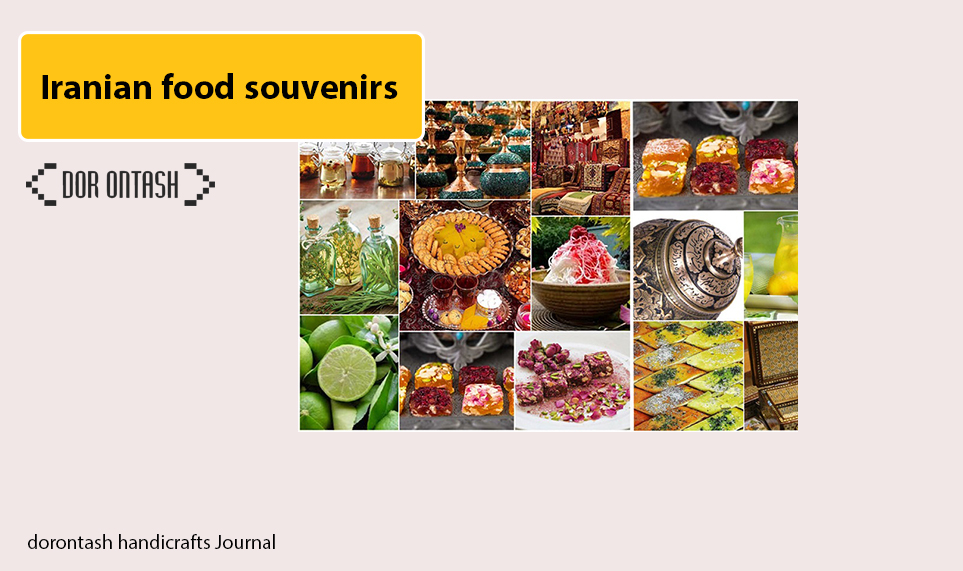Carpet weaving is one of the native arts of Iran and many parts of the world, which tempts the people of a region to create beautiful and spectacular objects. This attractive local art is created from the texture of plant fibers means wicker handicrafts. Native weavers use the art and strength of their hands to weave fibers, and they can also use simple hand tools while weaving.
One of the most attractive handicrafts and beautiful arts that is popular in Iran is carpet weaving. Mat weaving has been popular since the distant past in most African countries and Asian countries such as Iran, Indonesia, Thailand, etc. This attractive and popular art is mainly popular in the north and south of Iran in the form of home activities.
There are many men and women who are engaged in mat weaving to provide their daily expenses or to fill their free time! With the help of mats, you can produce various wicker products such as baskets, baskets, curtains, etc.

persian wicker handicrafts video
History of persian wicker handicrafts
As we said, mat weaving is one of the oldest arts of hand weaving created by humans by weaving and tying plant fibers. The artistic texture and the use of multi-colored fibers give versatility to this simple and original piece. Historically, the use of plant fibers to make things and meet the needs of daily life is older than the textile industry. The people of each region, depending on the plants in their environment, acquire the skill of making handicrafts from some kind of plant fibers. Carpet weaving is a large family of local weaving arts and includes other handicrafts such as Bahlavi, Turkbawi, Champavi, Chigbawi, bamboo weaving, pearl weaving and basket weaving.
The roots of this traditional art can be seen in many parts of the world such as Iran, China, Indonesia, Egypt, Malaysia, Iraq, Korea, Japan, Mexico, etc., which is the origin of this art. But to this day, the Sumerians of Mesopotamia, like the Egyptians, are more vulnerable than anywhere else in the world. It is said that the bamboo mat was the first carpet for mankind, and this shows the remarkable age of this beautiful handwoven tapestry.
What is wicker handicrafts?
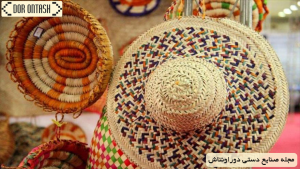 Mat weaving is the process of twisting, weaving and twisting plant threads in different shapes in a simple and patterned way with the help of hands and feet. Due to the fact that the raw materials of mat weaving are found in abundance in the north and south of Iran and this art is in harmony with the climatic conditions of these two regions, the prevalence of mat weaving in these areas is more than in other parts of Iran.
Mat weaving is the process of twisting, weaving and twisting plant threads in different shapes in a simple and patterned way with the help of hands and feet. Due to the fact that the raw materials of mat weaving are found in abundance in the north and south of Iran and this art is in harmony with the climatic conditions of these two regions, the prevalence of mat weaving in these areas is more than in other parts of Iran.
This type of handicraft has attracted many people due to its abundant and cheap raw materials. Woven mat products are found as decorative accessories in many urban homes these days. Also, foreign tourists show great interest in buying these products.
The art of mat weaving is actually twisting and weaving plant threads together. These braids may be simple or patterned and done with the help of hands or feet.
wicker handicraftsin Iran
Along with countries like Japan, Korea and Mexico, Iran is one of the sixteen mat producing countries. The historical background of these products in Iran shows that the use of mats by ancient Iranians was not limited to underlays, and they also used mats to make dishes. Even today, unlike the main use of mats, i.e. mats, wicker containers are more popular among handicraft enthusiasts.
wicker handicrafts in the north of iran
Wicker baskets and mats are one of the most important handicrafts in northern Iran, and these wooden products are woven from Iran according to the type of plant fibers that can be grown in this region. Rice stalks and swamp reed stalks are mat weaving fibers in the north of Iran. “Suf” is one of the swamp fibers and after drying under the sun, this straw is considered one of the fibers used in the texture of the mattress. Also, “Lee” or “Gali” is another type of reed used in mat weaving that grows around the marsh. “Hemp” is one of the fibers grown in the fields for the purpose of weaving mats, and after the stem and leaves turn yellow, it is ready to be picked for use in weaving. After soaking and softening, the leaves of the willow tree become one of the plant fibers for mat weaving, and they are not only specific to the northern regions of Iran, but they are used in other regions as well.
In the northern regions, they use kloosh (rice stalks) and marsh reed stalks for mat weaving. Also, due to the considerable amount of mat production in these areas, some special mat weaving plants are grown in the fields. Some of these plants are:
Sof: It is one of the types of reeds that grow wild in marshes and has thick needle reeds. After cutting, these straws are exposed to the sun in bunches to dry and get the right color. These straws are used as a weft in the fabric of the mattress with the machine.
Hemp: It is a plant that is cultivated for mat weaving. When the stem and leaves turn yellow and the seeds turn black, the plant is ready to harvest. The harvested plant is kept dry for a day or two until it wilts, then it is kept for a while in the water of a pond or marsh until the skin is ready to be removed. Finally, the peeled plants are hung to be completely dry and usable. These fibers are used in the fabric of the mattress with the machine as a web.
Li or Gali: It is one of the types of reeds that grow wildly by the marshes and it is used in the production of wicker products other than mats.
wicker handicrafts in the south of Iran
In the south of Iran, according to the type of tropical climate, for the preparation of special plant fibers for the texture of wicker objects, palm leaves and swamp reeds are used. “Kartak” is one of the marsh reeds, whose long and flexible stem is one of its advantages for use in mat weaving. After picking and removing the leaves from above, these reeds were cut lengthwise and all over. Finally, all these beaten straws become strips suitable for mat production. “Daz” palm leaves are also widely used in mat weaving in the southern regions of Iran due to their good strength.
What is produced from mat weaving?
A wide variety of products are produced from woven mats, including baskets, baskets, hats, carpets, mats, curtains, and many different dishes.
Where is mat weaving produced in Iran?
Mat weaving is produced in the southern and northern regions of Iran because their raw materials are easily available, and the production of this product and handicraft is very popular in these regions.
One of the reasons why mat weaving is popular in these areas is the cheapness of raw materials and the availability of raw materials. Today, some of these products are used as functional and decorative objects in urban life.
Wooden braids are seen flat and with volume. Creating a role and its variety depends on the threads and how to pass them under, the color of mat weaving products depends on the natural color of their raw materials, although in some cases, some threads are dyed and used.
Different types of mat weaving
According to the primary material used for weaving and the weaving method, mat weaving can be divided into the following categories:
- Mat weaving
- Bamboo weaving
- Marwarbafi
- Kapubafi
Classification of works produced in mat weaving: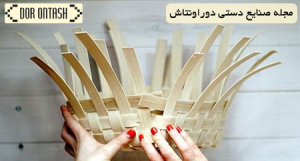
According to the raw materials used in wicker products, their production process can have different names. For example, kapo weaving, pearl weaving and bamboo weaving are among these items. People who work in this field are well aware of the properties of each of these subcategories of woven mats and what products can be produced with their help.
What is cupobuffy and what is its use?
Kapu is one of the common handicrafts in the south of Iran and especially in the outskirts of Dezful city, and its primary material is palm leaves. Many Iranian and foreign travelers want to buy this product from traditional markets. This beautiful art can be found in the homes of many of us Iranians. For example, most Iranian women have one or two kapu for their pots in their kitchen. With more than 300 weavers, Duravantash handicrafts has the largest production volume of kapoh in Iran.
History of persian wicker handicrafts :
One of the oldest handicrafts that has been popular in Iran is mat weaving. Archaeologists have found examples of this art in Mesopotamia and southern regions, and it has been proven that the first sub-scales used by the human race were reeds and swamp plants.
Of course, this is not the whole story! It is probably interesting for you to know that the city of Dezful is called the cradle of Kepu in Iran and it has also been registered as the city of Kepu.
Tools and tools for the art of mat weaving
Different tools can be used for mat weaving, but the most common tools are:
Mat weaving tool |
Application of mat weaving |
| All kinds of knives and scissors | Cutting pieces of wood and plants |
| his door | Drilling, chipping or breaking wood |
| Metric and tape ruler | To measure wood |
| glue | Gluing and fixing the pieces of wood |
| water bowl | Soaking wood fibers |
| Gas or alcohol lamp | Burning the lint |
| cardboard | To draw the initial design and molding |
What is the production method of mat weaving?
To make a mat, or so called mat weaving, the artist must go through several steps after choosing the raw materials (straw, palm leaves, willow tree branches, pomegranate tree branches, etc.), which are generally done according to the regional geography. . Since mat weaving is generally done with straw and palm leaves, in this article, we explain how to weave mats in both ways.

The reed branches in different lengths and diameters are picked from the marshes or the banks of the rivers using a sickle and the excess foliage is cut. Then, along the length of each reed, a slit is made using a knife or sickle. The straws are placed on top of each other in one place and then by hitting them and knocking them so to speak, the straws crack and crumble. By doing this, thin strips or strips of straw are created, and by weaving these strips, mat weaving is done. This model of mat weaving is mostly used to make underlay.
To use the leaves of date trees, they are first cut from the tree and then the leaves are separated from each other or filled. Then these leaves are placed in water until their color turns yellow. To speed up this step, sometimes boiling water is also used. The yellow leaves or palm tree strips are now ready to be woven and made into wicker containers.
To show their taste, artists sometimes use natural, chemical or thread colors to make the woven mat look better. Colored ink, or baqm, is applied to the mat as a natural color. This natural substance is available in green, purple, blue, and orange colors, and to achieve darker or brighter colors, some turmeric is added or added to it. Generally, the designs used in mat weaving are abstract and simple designs and are created by weaving mat strips. This means that the artists did not use pen and paint to color the mats, but by weaving different colors of the mats together, they create their desired design.
To weave woven mats, the mats are placed on top of each other in the form of warp and weft, and the skeins are woven together, one side and the other side. For a part of the container that is flat, the perpendicular strands are woven together (similar to knitting yarn). Mat weavers use different methods for the parts of the dish that have edges and the dish is not smooth. In one method, the mats are twisted diagonally to each other, and in other methods, they use new and circular threads to shape that part of the work.
wicker handicrafts training
The warp and weft of rattan weaves are flexible plant fibers that are woven together in a mesh or twisted form. Therefore, after preparing fibers from palm leaves, straw, thin pieces of willow, wheat stalk or rice, you should start the work. In the mesh method, you need strip fibers and after the necessary cuts and soaking, intertwine these flexible fibers as a warp and weft. During this process, you can continue the simple method of the checkered texture until the end or create more interesting works in some places with a little creativity in passing the fibers through each other or using other colors.
In the spiral weaving method, several strands of plant fibers must be woven together or wrapped around each other like a rope. Then you have to start from the center of the circle and with circular movements, pass this rope spirally from below on the base fibers. Beautiful baskets and hats are usually produced with the help of twist weave.
Of course, it goes without saying that the production of widely used wicker curtains is not woven with these two methods. Rather, they cut the marsh reeds to the same size and place them parallel to each other with specific distances. Finally, these straws are connected with thread and the edge of the straw curtain is covered with cotton cloths.
persian wicker handicrafts are exported to which countries?
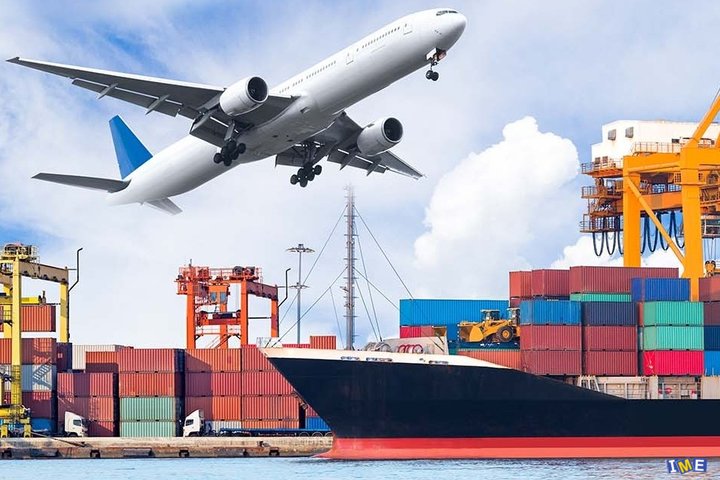
In the past, traditional mats used to decorate most of the windows and balconies of the old houses and prevent the strong light and heat of the sun from entering the houses, and even attract many insects to the houses, but with the modernization of urban life, mat weavers And mat shops became less prosperous in the cities, and today in big cities like Tehran, a handful of such shops can be found.
Job creation for mat weavers occurs only if their product is in demand for sale, and this increase in demand is possible only with the export of mats.
Making mats by hand in different regions of Iran differs from each other depending on the type of raw materials available. For example, in the southern part of Iran, date palm fibers are used, and in the northern part of Iran, rice and wheat stalks are used. On the other hand, the type of use of the production equipment is different in terms of shape and size depending on the needs of the people of that area. In Isfahan province, mat weaving is done in desert and dry areas such as Khor, Biabank, and Nayin, and the raw materials used are date palm fibers; But in Najafabad city, soft branches of one-year or two-year-old trees are used to weave wicker baskets. The baskets made in Najaf Abad are called Lode and they are used to carry garden products and fruits. In Qasr Shirin, the young branches of the palm tree are used for mat weaving, which is called “Fasil”.
Wicker is known in the global customs with the tariff code (HS Code) number 4601 .
- It should be noted that not all products can be examined in detail and for this reason, we analyze and examine a group of products that are related to the product you are looking for in order to determine the market potential of the selected product in different regions. Let’s know the world.
- All the following reports are based on what was declared and registered in customs until the end of 2018.
- The effort is to get to know the business environment of your desired product better by reading these reports and to provide stronger conclusions for your business with more knowledge.
Global market situation
Mat export statistics
The goal is to identify competitors in the global market.
 Total export figure: 613,993,000 dollars
Total export figure: 613,993,000 dollars
 The five-year growth rate of the value of each unit: -3 percent
The five-year growth rate of the value of each unit: -3 percent
 One-year growth rate of the value of each unit: 14 percent
One-year growth rate of the value of each unit: 14 percent
 Average distance from the importing country: 5,228 KM
Average distance from the importing country: 5,228 KM
Mat import statistics
The goal is to know the applicants and potentials in the global market.
![]() Total import figure: 412,971,000 dollars
Total import figure: 412,971,000 dollars
![]() The five-year growth rate of the value of each unit: -5 percent
The five-year growth rate of the value of each unit: -5 percent
![]() One-year growth rate of the value of each unit: 7 percent
One-year growth rate of the value of each unit: 7 percent
![]() Average distance from the exporting country: 4,834 KM
Average distance from the exporting country: 4,834 KM
Export chart
The bar graph below shows the rank and volume of exports of the countries of the world.
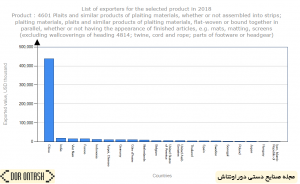
If you are interested in making rattan products, you can buy all kinds of these products with great variety and reasonable prices from Duravantash store.


